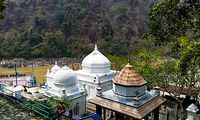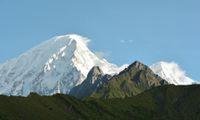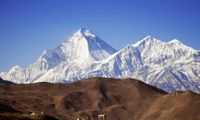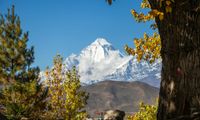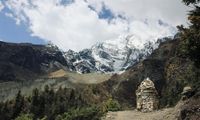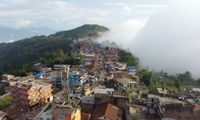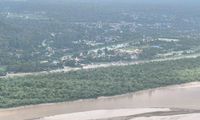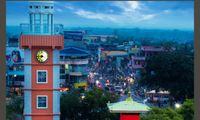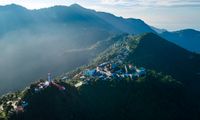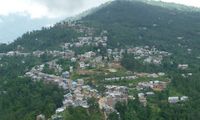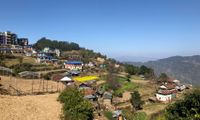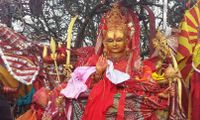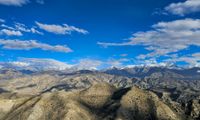Nar Phu Valley
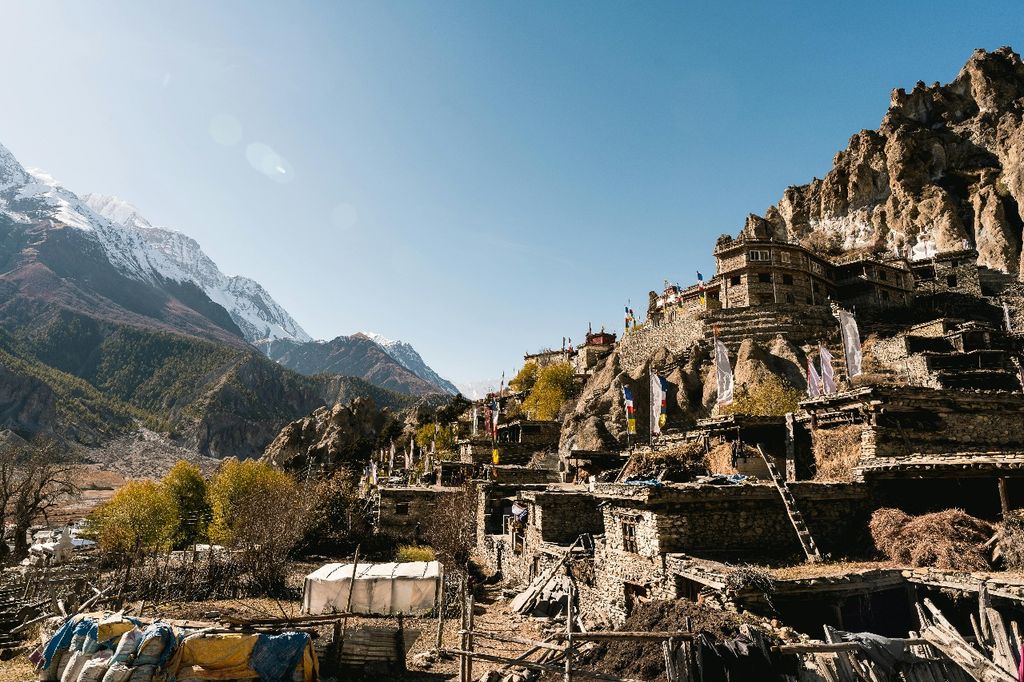
About
Tucked away in the far reaches of the Annapurna region lies one of Nepal’s best-kept secrets — Nar Phu Valley, a rugged and mystical land untouched by time. This hidden valley of Nepal, opened to the outside world only in 2003, offers a rare opportunity to step into a world where ancient Tibetan traditions still thrive, surrounded by towering Himalayan peaks and dramatic landscapes.
Nar Phu is not just a trekking route; it's a cultural sanctuary. Home to the Himalayan villages of Nar and Phu, this region welcomes travelers into a world of prayer flags, stone-built houses, yaks grazing on windswept pastures, and Buddhist monasteries whispering chants in the mountain air. Life here moves slowly, peacefully, and with deep spiritual connection to the land.
Whether you come to trek or simply to witness its raw beauty, Nar Phu Valley is a place that touches your soul — where ancient culture, natural silence, and the majestic Himalayas come together in a way that is rarely found elsewhere.
Locate Us
Nar Phu Valley – Overview
Nar Phu Valley is a remote and majestic corner of the Annapurna region, known for its untouched landscapes, deep spirituality, and timeless culture. Located north of the famous Annapurna Circuit trail, this valley sits above 4,000 meters and is home to two ancient villages: Nar and Phu. Their stone walls, high-altitude pastures, and sacred monasteries paint a picture of life as it was centuries ago.
Reaching the valley is part of the journey. After crossing the Marshyangdi River and winding through pine forests, you enter a narrow gorge — the mystical doorway into the hidden valley of Nepal. From that point on, everything feels different: the silence, the air, the energy.
The villages are surrounded by breathtaking Himalayan giants and glaciers, but it's the people of Nar Phu Valley who truly define the place — kind, resilient, deeply spiritual, and welcoming. The air is filled with the scent of juniper, the sound of yak bells, and the hum of daily prayers.
Whether you're a spiritual traveler, a cultural explorer, or a trekking enthusiast, Nar Phu Valley offers more than a destination — it offers an experience that lingers in your heart long after you've left. This is where the mountains speak and the soul listens.
Highlights of Nar Phu Valley
- The untouched charm of Nar Phu village, tucked between the Himalayas
- Witness a living museum of Tibetan culture and Buddhist heritage in Nepal
- Explore ancient monasteries (Gompas), colorful chortens, and sacred Mani walls
- Watch yaks roam through high pastures and locals farm barley and potatoes
- Meet warm-hearted people living a simple, traditional life in stone-built homes
- Enjoy panoramic views of Annapurna, Dhaulagiri, and Manaslu peaks
- Cross dramatic gorges, rock canyons, and forested trails to enter the valley
- Feel the spiritual stillness in every corner of this hidden Himalayan valley
- Visit the iconic Tashi Lhakhang Monastery in Phu — blessed by Guru Rinpoche
- Experience life far from roads, noise, and crowds in this remote Nepal gem
Best Time to Visit Nar Phu Valley – Monthly Weather Insights
Choosing the best time to visit Nar Phu Valley is key to unlocking its mystical beauty and remote Himalayan charm. Located in the northern Annapurna region, this hidden valley of Nepal rises above 4,000 meters and hosts the ancient Tibetan-influenced villages of Nar and Phu. With harsh winters, unpredictable monsoons, and breathtaking seasonal shifts, knowing when to go can make all the difference.
Here’s a detailed month-by-month weather guide to help you plan your journey to this spectacular and spiritual Himalayan village region.
1. Spring (March to May)
- Nature and Culture in Full Bloom
- Widely regarded as one of the best times to visit Nar Phu Valley
- Crisp skies, moderate temperatures, and excellent trail conditions
- Rhododendrons bloom in the lower trails, adding color to your ascent
- Snow still lingers around the high passes and village rooftops, adding to the photogenic scenery
- Perfect for both trekking and cultural immersion in Nar and Phu
- Locals begin field work; a lively time in the highlands
Weather:
- Day: 8°C–15°C (lower areas)
- Night: -5°C to 0°C (upper villages)
2. Summer/Monsoon (June to August)
- Unpredictable Skies and Risky Trails
- Not the ideal time for trekking to Nar Phu Valley
- Trails become slippery due to rainfall and landslides in lower areas
- Cloud cover blocks views of Annapurna, Himlung, and Manaslu
- Leech-infested forest paths and flight/road delays are common
- However, the high-altitude Himalayan villages still hold raw beauty in monsoon mists
- Suitable only for cultural researchers or off-season village stays with caution
Weather:
- Day: 10°C–18°C (humid lower trails)
- Night: 0°C–5°C (upper valley)
3. Autumn (September to November)
- Clear Skies, Majestic Views, and Festive Energy
- Peak season and most stable weather for visiting Nar Phu Valley
- The monsoon washes the air clean, offering unmatched visibility of the snow peaks
- Annapurna, Kangaru Himal, and Pisang Peak appear radiant under deep blue skies
- Locals celebrate major Hindu and Buddhist festivals—Dashain, Tihar, and Lhosar
- Ideal for both trekking and exploring spiritual life in Nar and Phu
Weather:
- Day: 10°C–16°C
- Night: -5°C to 2°C
- Dry trails, golden pastures, and chilly yet comfortable evenings
4. Winter (December to February)
- Frozen Silence and Mountain Solitude
- For those who seek adventure and raw, silent beauty
- Nar and Phu are often snowbound and temperatures can plunge well below zero
- Few travelers visit during this time, but it’s a magical season for solitude and snowy photography
- Trekking is still possible with proper gear, guides, and preparation
- High passes may be closed, and homestays in the villages might be limited or shut
- Camping near the villages is common for those braving the winter cold
Weather:
- Day: 0°C–5°C
- Night: -10°C to -20°C in higher elevations
Final Weather Tips for Nar Phu Valley Visitors
- Spring and autumn are the safest and most rewarding seasons for exploring both the landscape and culture of Nar Phu
- Always check local forecasts and trail conditions before departing
- Monsoon visits should only be for village-based experiences—not for high-altitude trekking
- Dress in layers year-round: alpine sun is warm, but shade and nights are freezing
- Plan at least 10–12 days to fully experience the valley, including its villages, monasteries, and surrounding peaks
Nar Phu Valley offers a different face in every season — from flower-filled trails and festival dances in spring and autumn to mystical fog and deep snow in summer and winter. With the right timing, your journey to this hidden valley of Nepal will be nothing short of transformational.
Weather: A Typical Day in Nar Phu Valley
A typical day in Nar Phu Valley brings with it the raw essence of high Himalayan wilderness. Located at elevations ranging from 3,500 to over 4,200 meters, this remote Tibetan-influenced valley in the Annapurna region of Nepal is defined by alpine silence, dramatic landscapes, and ever-changing weather.
Morning:
Mornings in Nar Phu are cold and peaceful. During spring and autumn, temperatures range from 2°C to 8°C, often accompanied by a thin layer of frost or morning mist. As the sun slowly rises over the towering peaks of Kangaru Himal, Himlung Himal, and Annapurna II, golden light washes over the ancient stone houses and barren cliffs, creating an atmosphere that feels untouched by time.
Afternoon:
This is the warmest and most vibrant part of the day. With temperatures rising to around 10°C to 16°C, it’s the best time for exploring the historic villages of Nar and Phu, visiting ancient Buddhist monasteries, or capturing crystal-clear views of the surrounding Himalayan giants. The skies are generally clear, revealing dramatic gorges, glacial valleys, and snow-capped peaks in full glory.
Evening:
Evenings in Nar Phu Valley bring back the cold swiftly. As the sun dips behind the rugged cliffs, temperatures often fall below 0°C, especially in winter and late autumn. Nights are crisp and quiet, with clear starry skies or occasional snowfall depending on the season. Indoor fires and yak wool blankets are essential comforts in this remote land.
Monthly Weather Overview
January – February (Winter):
These are the coldest and quietest months in Nar Phu Valley. Temperatures can drop to -15°C at night, and snow may block high mountain passes like Kang La. However, the landscape turns into a surreal white desert, offering a peaceful winter wonderland for those well-prepared with proper gear.
March – May (Spring):
One of the best times to visit Nar Phu Valley. Temperatures gradually rise, skies clear up, and the entire region becomes ideal for trekking and photography. Daytime temperatures range from 8°C to 16°C. The trails to Nar and Phu villages are open, and the sparse high-altitude flora begins to bloom.
June – August (Monsoon):
Nar Phu Valley lies in the rain shadow of the Annapurna and Manaslu ranges, so it receives less rain than southern regions. Still, lower trail sections can be muddy and prone to landslides. Cloudy skies may obscure the mountains, and humidity increases in lower areas. Trekking is possible but not recommended for everyone.
September – November (Autumn):
This is the most popular trekking season in Nar Phu Valley. Temperatures range from 10°C to 18°C during the day. Post-monsoon air clarity reveals some of the best mountain views in Nepal, including peaks like Pisang Peak, Himlung, and Tilicho Himal. Cultural festivals and stable weather make it an ideal time to visit.
December (Early Winter):
Cool, dry, and scenic. Snow starts to return to higher elevations. Daytime temperatures remain around 5°C to 10°C, while nights get colder. A good month for solitude seekers, but facilities may begin to close in remote areas like Phu.
Height and Altitude of Nar Phu Valley
Nar Phu Valley is situated at an impressive altitude, with its villages resting between approximately 3,500 meters (11,480 feet) and the surrounding mountain passes rising above 4,200 meters (13,780 feet). Located in the secluded northern part of the Annapurna Conservation Area, this valley offers a rare glimpse into traditional Himalayan life amid towering peaks.
The valley’s high elevation provides panoramic views of some of Nepal’s most majestic mountains, including Manaslu (8,163m), Annapurna II (7,937m), and Dhaulagiri (8,167m). While the altitude requires proper acclimatization for visitors, it presents an incredible opportunity to experience untouched mountain landscapes far from the usual trekking crowds.
Due to its height, Nar Phu Valley enjoys fresh, crisp air year-round and sees occasional snowfall during the winter months. The elevation also supports a unique ecosystem, where hardy alpine plants thrive. This remote Himalayan setting creates a peaceful and spiritual atmosphere, perfect for travelers seeking both adventure and cultural connection.
Whether you are visiting to admire the spectacular mountain vistas, immerse yourself in the valley’s rich Tibetan-influenced culture, or simply enjoy the tranquility of a high-altitude Himalayan valley, Nar Phu’s elevation ensures a truly memorable experience.
How to Get to Nar Phu Valley?
Reaching Nar Phu Valley, a hidden Himalayan treasure in the Annapurna region, is an exciting journey that takes you through breathtaking landscapes and culturally rich villages. Here’s how you can access this remote valley:
From Kathmandu to Besi Sahar:
Start your trip by traveling from Kathmandu to Besi Sahar, either by tourist bus or private jeep. The journey by road takes approximately 6 to 7 hours through scenic hills and river valleys. Alternatively, you can fly to Pokhara and then continue by road to Besi Sahar.
From Besi Sahar to Koto:
From Besi Sahar, take a local jeep or bus to Koto, a gateway village to the Nar Phu Valley. The drive covers rough mountain roads and usually takes 5 to 6 hours. This part of the route offers stunning views of terraced fields and forested slopes.
Trekking from Koto to Nar Phu Valley:
The trek officially begins from Koto, winding through narrow canyons, pine forests, and traditional villages like Meta and Phu. The trail takes about 5 to 6 days one way, depending on your pace. Along the way, you’ll experience ancient Tibetan-influenced culture, Buddhist monasteries, and panoramic views of mountains like Manaslu and Annapurna II.
Alternate Route via Manang and Kang La Pass:
For experienced trekkers, another route leads to Nar Phu Valley from Manang by crossing the Kang La Pass (5,320m). This challenging path takes you through high alpine terrain, glacial lakes, and offers breathtaking views of surrounding peaks. This route takes about 10 to 12 days and is recommended only for well-acclimatized trekkers.
Related Treks Starting from Nar Phu Valley
If the mystical charm and remote beauty of Nar Phu Valley call to your adventurous soul, you’re about to embark on some of Nepal’s most captivating and culturally immersive treks. Hidden deep within the Annapurna Conservation Area, Nar Phu offers a gateway to less-traveled Himalayan paths filled with stunning mountain vistas, ancient Tibetan culture, and authentic village life. Whether you’re a seasoned trekker seeking new horizons or a nature lover eager to explore tranquil trails, here are three remarkable treks starting from Nar Phu Valley that promise awe-inspiring experiences and heartfelt connections.
1. The Classic Nar Phu Valley Trek (6–7 Days):
This signature trek is perfect for those wanting to dive into the heart of Nepal’s untouched highlands. Beginning from Koto, the trail gently climbs through narrow gorges, high-altitude pine forests, and charming traditional villages like Nar and Phu. Along the way, you’ll encounter ancient Buddhist monasteries, yak pastures, and panoramic views of towering Himalayan giants including Manaslu (8,163m), Himlung Himal, and Annapurna II. This journey offers an authentic cultural experience, allowing you to witness the lifestyle of Tibetan-influenced mountain communities while trekking in a pristine natural environment. The crisp mountain air, starry nights, and serene solitude make this trek a spiritual adventure for every traveler.
2. Nar Phu to Manang Circuit via Kang La Pass:
For trekkers seeking an extended challenge with diverse landscapes, the route from Nar Phu Valley to Manang via the Kang La Pass (5,320m) is an unforgettable option. This circuit combines the raw wilderness of Nar Phu with the popular Annapurna Circuit, taking you over high alpine passes, past turquoise glacial lakes, and through ancient trade routes. The trek rewards you with stunning views of snow-capped peaks, including Tilicho Peak and Gangapurna, while offering a glimpse into the resilient cultures that thrive in these harsh yet beautiful environments. This route requires good fitness and acclimatization but delivers some of the most dramatic and varied scenery in the Annapurna region.
3. Nar Phu Valley to Mustang via the Luri Pass:
For adventurers wanting to explore beyond Annapurna, the trek from Nar Phu Valley to Upper Mustang via the remote Luri Pass offers a once-in-a-lifetime experience. This route takes you through rugged mountain terrain, ancient caves, and isolated villages where Tibetan culture remains vibrant and largely untouched by modern tourism. As you cross the high Luri Pass, you’ll be rewarded with breathtaking views of Mustang’s arid landscapes and the towering Himalayas beyond. This trek is perfect for those seeking solitude, unique cultural encounters, and the thrill of journeying through one of Nepal’s most mysterious regions.
Things to Do in Nar Phu Valley: Hidden Himalayan Adventures and Cultural Experiences
Nar Phu Valley, tucked away in the remote Annapurna region, offers more than just breathtaking mountain views—it’s a gateway to unique activities that combine adventure, culture, and nature. Whether you’re a trekking enthusiast, a cultural explorer, or a nature lover, here are the top things to do in Nar Phu Valley that make this destination unforgettable:
1. Explore Ancient Tibetan Villages of Nar and Phu:
Step back in time as you wander through the traditional stone-built villages of Nar and Phu. These settlements preserve centuries-old Tibetan culture, with charming mani walls, prayer flags fluttering in the wind, and warm-hearted locals living traditional farming lifestyles. Discover authentic mountain life, yak herding, and ancient monasteries rarely visited by tourists.
2. Trek the Remote Nar Phu Valley Trails:
The Nar Phu trek is a hidden gem for those who want to escape crowded routes. Wander through narrow canyons, rhododendron forests, and high alpine pastures. Experience spectacular views of towering peaks like Manaslu, Himlung Himal, and Annapurna II. This less-explored trekking path offers tranquility, raw natural beauty, and rewarding physical challenges.
3. Visit the Historic Buddhist Monasteries:
Nar Phu Valley is home to several ancient Buddhist gompas (monasteries) that offer spiritual insight and a glimpse into Himalayan religious traditions. These monasteries, adorned with colorful murals and sacred artifacts, are quiet sanctuaries for meditation and reflection amid stunning mountain surroundings.
4. Experience Local Festivals and Cultural Ceremonies:
Time your visit to coincide with local festivals like Lhosar (Tibetan New Year) or Mani Rimdu to witness vibrant dances, traditional music, and religious rituals. Participating in these festivals offers a deep cultural connection and understanding of the valley’s unique heritage.
5. Wildlife and Bird Watching in Nar Phu Valley:
The valley’s diverse habitats attract wildlife such as Himalayan blue sheep, snow leopards (rarely seen), and the colorful Danphe—Nepal’s national bird. Nature lovers and photographers will appreciate the peaceful settings and opportunity to spot these creatures in their natural environment.
6. Photography of Untouched Himalayan Landscapes:
Nar Phu’s dramatic cliffs, glacial valleys, and ancient villages make it a paradise for photographers seeking unspoiled Himalayan beauty. Capture golden sunrises, intricate village architecture, and panoramic mountain vistas far from tourist crowds.
These unique activities make Nar Phu Valley more than just a trekking destination—they invite you to experience the heart and soul of Nepal’s high Himalayas. Whether you’re trekking, cultural sightseeing, or simply soaking in the pristine landscapes, Nar Phu promises an unforgettable adventure away from the beaten path.
Where to Stay in Nar Phu Valley?
When visiting the remote and culturally rich Nar Phu Valley, accommodation options are simple but offer a deeply authentic experience immersed in traditional Himalayan life. Since Nar Phu remains one of Nepal’s lesser-traveled destinations, visitors can choose from homestays in ancient villages, basic guesthouses, or camping amidst stunning mountain landscapes.
Homestays:
For travelers looking to connect closely with local culture, staying in homestays in the villages of Nar, Phu, and nearby settlements is the ideal choice. These community-run homestays provide clean and cozy rooms, hearty home-cooked meals, and warm hospitality from families who have lived in the valley for generations. Guests can savor traditional Tibetan-influenced dishes like tsampa, yak butter tea, and momo while enjoying stories and songs from local hosts. Staying in homestays supports the village economy directly and offers an unforgettable window into the daily life and spiritual traditions of Nar Phu’s mountain communities.
Guesthouses:
While accommodations remain basic, a few small guesthouses exist in Nar and Phu villages catering to trekkers and researchers. These family-run guesthouses provide simple rooms with essential amenities such as clean bedding, heating with yak dung stoves, and meals prepared with local ingredients. Guesthouses offer a comfortable resting place after long days of trekking and a chance to meet fellow travelers exploring this hidden Himalayan valley.
Camping:
For those seeking complete immersion in the pristine high-altitude environment, camping is an excellent option. Many trekkers choose to camp near the villages or in scenic spots along the trail, bringing their own tents or arranging equipment through local guides. Camping in Nar Phu Valley means sleeping under clear starry skies, surrounded by towering Himalayan peaks like Manaslu and Annapurna II. Although camping requires good preparation and gear, it offers unparalleled solitude and connection to the raw beauty of this remote region.
Do You Need a Permit for Nar Phu Valley?
One of the most common questions among travelers is about permits for Nar Phu Valley. Unlike popular trekking areas like the Annapurna Circuit, Nar Phu Valley requires a special restricted area permit to enter because it lies near the Tibetan border and is part of a protected conservation zone.
To trek in Nar Phu, you must obtain both the Annapurna Conservation Area Permit (ACAP) and the Restricted Area Permit (RAP) issued by the Nepal government. These permits are essential for legal entry and help support conservation and local communities. Permits can be arranged through trekking agencies, or you can obtain them in person at offices in Kathmandu or Pokhara before your journey.
For a smooth experience, it’s advisable to hire a registered guide who can handle all permit formalities on your behalf and accompany you throughout the trek, ensuring compliance with local regulations.
Is Nar Phu Valley Safe for Solo Travelers?
Nar Phu Valley offers an extraordinary experience but poses some challenges for solo travelers. The valley’s remote location, rugged terrain, and sparse population mean limited infrastructure, few emergency facilities, and isolated trails that are not always well-marked.
If you plan to trek solo in Nar Phu Valley, hiring a local guide or porter is highly recommended. Guides not only enhance safety but also provide invaluable insights into the valley’s rich culture, traditions, and natural environment. Their knowledge can help you navigate tricky sections, communicate with locals, and enrich your overall journey.
Be sure to carry essential supplies such as water, high-energy snacks, a first-aid kit, a reliable flashlight, and power banks for your devices. Mobile network coverage is limited and often unreliable, so inform family or friends about your itinerary and expected return before heading into the valley.
With proper preparation and respect for the remote environment, Nar Phu Valley can be a safe and rewarding destination even for solo adventurers seeking a truly off-the-beaten-path Himalayan experience.
Nar Phu Valley vs Upper Mustang – Which One Should You Choose?
When choosing between the hidden Himalayan gems of Nar Phu Valley and Upper Mustang, understanding their distinct charms and experiences is essential. Both destinations offer remote trekking adventures steeped in Tibetan culture, but each has its own unique appeal.
Nar Phu Valley, on the other hand, remains one of Nepal’s best-kept secrets — a pristine alpine valley where traditional Tibetan lifestyles thrive amidst soaring peaks, narrow gorges, and untouched wilderness. The valley’s raw natural beauty and spiritual ambiance invite trekkers seeking solitude and genuine cultural connections far from the crowds.
Upper Mustang is often described as a mystical desert kingdom, rich with ancient caves, fortified villages, and arid landscapes shaped by centuries of Tibetan influence. It is more accessible yet still requires a restricted area permit, drawing travelers fascinated by its mysterious history and dramatic terrain.
Unique Features of Nar Phu Valley:
- Remote alpine valley with lush forests, high passes, and narrow canyons
- Traditional Tibetan-influenced villages like Nar and Phu with warm hospitality
- Trekking routes offering solitude and less tourist traffic
- Breathtaking views of giants like Manaslu, Annapurna II, and Himlung Himal
- Rich biodiversity including rhododendron forests and rare wildlife
- Demands good acclimatization and physical fitness for high passes
- Perfect for travelers seeking spiritual peace and cultural authenticity
Unique Features of Upper Mustang:
- Dramatic arid landscapes and vast desert-like valleys
- Ancient walled villages and Tibetan Buddhist monasteries
- Known as the “Last Forbidden Kingdom” with rich history and mystery
- Requires special restricted area permits and guides
- Popular among photographers and cultural explorers
- Dry climate with clear skies and vibrant sunsets
- Growing tourism infrastructure but still remote compared to mainstream treks
Choose Nar Phu Valley if your heart longs for untouched wilderness, quiet mountain trails, and intimate encounters with Himalayan cultures deeply connected to Tibetan Buddhism. Nar Phu offers a more rugged and challenging adventure, perfect for experienced trekkers seeking serenity, spectacular alpine scenery, and the rare chance to walk paths where few have ventured.
Choose Upper Mustang if you are drawn to surreal landscapes, ancient Tibetan culture, and a dry, desert-like environment that feels like stepping into another world. It’s ideal for photographers, history enthusiasts, and those curious about Nepal’s remote cultural kingdoms. The trails are easier to access with well-established lodges, but the region’s mystique and strict permit rules keep it exclusive and special.
Both destinations promise unforgettable journeys into Nepal’s spiritual and natural heartlands. Your choice depends on whether you prefer the stark, dramatic beauty and historic mystery of Upper Mustang or the serene, high-altitude landscapes and cultural richness of Nar Phu Valley.
Nearby Attractions and Villages Around Nar Phu Valley
Nar Phu Valley, tucked away in Nepal’s Annapurna Conservation Area, is a hidden gem that offers trekkers an extraordinary blend of pristine nature, Tibetan-influenced culture, and breathtaking Himalayan landscapes. Beyond the valley itself, several nearby villages and natural wonders provide unique experiences for adventurous travelers. Exploring these spots not only enriches your trekking itinerary but also deepens your connection with the Himalayan environment and its people.
Nar Village
Location & Altitude: Nar Village is situated at an elevation of approximately 4,183 meters (13,720 feet) above sea level. It lies in the heart of Nar Phu Valley and is the gateway for many trekking routes deeper into the region.
Attractions & Cultural Significance: Nar is famous for its well-preserved Tibetan Buddhist culture, reflected in its traditional stone houses, mani walls, and the ancient Nar Monastery. The village is surrounded by terraced farmland where locals cultivate barley, potatoes, and buckwheat using age-old farming methods. Nar’s peaceful atmosphere provides a perfect opportunity to experience authentic Himalayan hospitality and spiritual traditions. Visitors often enjoy walking through the narrow stone-paved alleys, observing colorful prayer flags fluttering in the mountain breeze, and attending local festivals that celebrate Tibetan heritage.
Why Visit: Nar Village is a living museum of Tibetan culture and traditional Himalayan life, making it an essential stop for trekkers who want to explore more than just the scenery.
Phu Village
Location & Altitude: Located about 6 kilometers north of Nar, Phu Village is perched at an altitude of around 3,960 meters (12,992 feet). It is one of the most remote and least disturbed villages in the Annapurna region.
Attractions & Cultural Significance: Phu is renowned for its unique stone houses with flat roofs, designed to withstand the harsh mountain winters. The village is home to the famous Tashi Lhakhang Monastery, a spiritual center dating back several centuries, where monks perform traditional Buddhist rituals. The surrounding yak pastures add to the picturesque landscape, providing a glimpse into the pastoral lifestyle of the Phu-ten people. Visitors can interact with locals and learn about their festivals, folklore, and crafts, which remain deeply rooted in Tibetan Buddhist customs.
Why Visit: For trekkers seeking a truly off-the-beaten-path experience, Phu offers solitude, cultural richness, and untouched natural beauty.
Kang La Pass
Location & Altitude: Kang La Pass stands at an impressive 5,320 meters (17,454 feet) and serves as a natural mountain gateway between Nar Phu Valley and the Annapurna Circuit trail near Manang.
Attractions & Trekking Highlights: The pass is famous for providing panoramic views of some of Nepal’s highest peaks, including Annapurna II (7,937 meters), Manaslu (8,163 meters), and Gangapurna (7,455 meters). Trekking over Kang La Pass is a challenging but rewarding experience, allowing adventurers to traverse varied terrain from rugged cliffs to snowfields. The ascent offers opportunities to spot Himalayan wildlife like blue sheep and mountain goats. The pass connects the secluded Nar Phu with more frequented trekking routes, enabling trekkers to explore diverse landscapes within one journey.
Why Visit: Kang La Pass is essential for those who want to experience dramatic high-altitude trekking while witnessing the grandeur of the Annapurna massif.
Tilicho Lake
Location & Altitude: Tilicho Lake, located near the northern part of the Annapurna Circuit, sits at 4,919 meters (16,138 feet) and holds the title as one of the highest lakes in the world.
Attractions & Natural Beauty: This alpine lake is surrounded by towering Himalayan peaks, including Tilicho Peak (7,134 meters). Its turquoise, crystal-clear waters create a breathtaking contrast against the rugged mountain backdrop. The trek to Tilicho Lake is a side journey accessible from the Annapurna Circuit, often combined with Nar Phu Valley treks for those seeking extended adventure. Visitors marvel at the pristine wilderness, glaciers, and rare alpine flora that thrive in this high-altitude environment.
Why Visit: Tilicho Lake is a must-see for nature lovers and trekkers wanting to explore one of Nepal’s most stunning natural wonders beyond popular trails.
Manang Village
Location & Altitude: Manang Village, located at about 3,540 meters (11,614 feet), is a prominent stop on the Annapurna Circuit situated southeast of Nar Phu Valley.
Attractions & Local Culture: Known for its Tibetan Buddhist heritage, Manang is dotted with beautiful monasteries, prayer flags, and traditional yak cheese factories. The village offers trekkers essential amenities such as guesthouses, shops, and eateries while retaining its cultural authenticity. Manang’s surrounding landscape features sweeping views of glaciers, alpine meadows, and towering peaks like Annapurna III and Gangapurna. Trekkers often use Manang as a base to acclimatize before pushing towards higher passes like Thorong La.
Why Visit: Manang provides a balanced blend of cultural richness, natural beauty, and comfort, making it a key stopover for trekkers in the region.
Muktinath Temple
Location: Situated at an altitude of 3,710 meters (12,172 feet) in the Mustang district, Muktinath Temple is accessible from trekking routes linking Nar Phu and Upper Mustang.
Attractions & Spiritual Importance: Muktinath is a revered pilgrimage site for both Hindus and Buddhists. The temple complex is famous for its 108 holy water spouts (Jharna), the eternal flame that burns despite harsh weather, and ancient shrines. Pilgrims come here to seek spiritual purification and blessings. The surrounding landscape offers serene mountain views and a peaceful ambiance that deeply resonates with visitors.
Why Visit: Muktinath is a spiritual highlight on any trek around Nar Phu, providing a meaningful cultural and religious experience.
Kagbeni Village
Location & Altitude: Kagbeni Village is located at approximately 2,800 meters (9,186 feet) and marks the entrance to Upper Mustang, just northeast of Nar Phu Valley.
Attractions & Cultural Heritage: Known for its medieval Tibetan architecture, Kagbeni features mud-brick houses, narrow alleys, and several old monasteries such as Chhairo Gompa. The village stands at the crossroads of cultural and geographic transition—from lush Himalayan foothills to Mustang’s arid trans-Himalayan desert. Kagbeni’s traditional lifestyle, markets, and festivals attract travelers eager to explore Mustang’s unique heritage.
Why Visit: Kagbeni is a cultural gateway and base for exploring Upper Mustang’s mystical landscapes and ancient Tibetan culture.
These nearby villages and natural attractions around Nar Phu Valley offers trekkers a rich tapestry of Himalayan experiences—from cultural immersion and spiritual journeys to high-altitude adventures and stunning natural beauty. Each destination complements the allure of Nar Phu, ensuring your trekking adventure in Nepal is as unforgettable as the mountains themselves.
Local Insights That Make Nar Phu Valley Unique
Spring Blossoms: Rhododendrons, Primulas, and Rare Alpine Flowers:
Nar Phu Valley bursts into vibrant life each spring when expansive rhododendron forests blanket the slopes in dazzling reds and pinks. Alongside these, delicate primulas and rare alpine wildflowers such as the blue poppy—Nepal’s national flower—grace the meadows and rocky crevices. These floral displays create a spectacular and colorful landscape that attracts nature lovers and photographers, making spring an especially magical time to explore Nar Phu Valley.
Rich Wildlife: Himalayan Blue Sheep, Musk Deer, and Birds of Prey:
The remote wilderness of Nar Phu Valley is home to fascinating wildlife like the elusive Himalayan blue sheep (bharal) and shy musk deer, which roam the rugged terrain and forest edges. Birdwatchers can spot the striking lammergeier vultures and golden eagles soaring overhead, adding excitement to any trek in this wild region.
Medicinal Herbs and Unique Flora of Nar Phu Valley:
Nar Phu is known for its rich biodiversity including valuable medicinal plants. The rare and highly prized Yarsagumba (Cordyceps sinensis), a fungus used in traditional medicine, is found in this region during certain seasons. The valley also hosts aromatic herbs such as juniper, wild rhubarb, and other alpine shrubs used by locals for healing and ritual purposes, making it a hotspot for herbal enthusiasts and researchers.
Spiritual Significance: Ancient Monasteries and Meditation Caves:
The valley holds deep spiritual importance with ancient Buddhist monasteries like Tashi Lhakhang in Phu Village. Many meditation caves dot the landscape, believed by locals to be sacred spots for spiritual reflection and blessings. This imbues Nar Phu Valley with a peaceful and mystical aura that resonates with trekkers seeking tranquility and cultural depth.
Cultural Festivals: Mani Rimdu and Tibetan Buddhist Traditions:
Nar Phu communities celebrate rich Tibetan Buddhist festivals such as Mani Rimdu, which features mesmerizing masked dances, sacred chants, and ritual ceremonies at local gompas. These lively festivals are a window into the valley’s spiritual heritage and offer visitors an immersive cultural experience rarely found on popular trekking routes.
Traditional Farming and Local Life:
The villagers of Nar Phu practice ancient farming methods, cultivating barley, buckwheat, and potatoes on terraced fields. They also raise yaks and sheep, adapting to the harsh mountain climate. This traditional lifestyle remains largely unchanged and provides travelers with a rare glimpse into Himalayan rural life.
Unique Himalayan Landscape and Natural Beauty:
Nar Phu Valley’s dramatic landscape combines snow-capped peaks, deep gorges, alpine meadows, and crystal-clear rivers. The untouched wilderness is a haven for nature lovers and photographers, offering spectacular views of giants like Annapurna II, Manaslu, and Gangapurna throughout the year.
Nar Phu Valley: Location, Elevation, and Geographic Features
Nar Phu Valley is situated at approximately 28.4400° N latitude and 84.0270° E longitude, nestled within the remote northern reaches of Nepal’s Annapurna Conservation Area. This secluded Himalayan valley rises between 3,500 to 5,200 meters (11,483 to 17,060 feet) above sea level, offering trekkers a dramatic and pristine high-altitude environment far from the usual tourist trails.
The valley’s geography is defined by towering snow-capped peaks such as Annapurna II (7,937m), Gangapurna (7,455m), and Manaslu (8,163m) that frame the rugged terrain, deep gorges, and narrow river canyons carved by the Nar and Phu rivers. The landscape transitions from dense conifer and rhododendron forests in the lower reaches to alpine meadows and rocky moraine fields higher up, creating diverse ecological zones.
Nar Phu’s unique location near the Tibetan border means it is heavily influenced by Tibetan culture and ecology, reflected in its ancient monasteries, traditional stone houses, and yak grazing pastures. Spring breathes life into the valley with vibrant wildflowers and rhododendrons, while autumn provides crystal-clear views of the Himalayan giants dominating the skyline. Winter transforms Nar Phu into a serene snow-covered wilderness, perfect for those seeking solitude amidst stunning alpine scenery.
Whether you are drawn to Nar Phu Valley for its untouched natural beauty, rich cultural heritage, or challenging trekking routes, its high altitude and remarkable geography offer an unforgettable Himalayan adventure.
Is Nar Phu Valley Worth Visiting?
Absolutely, Nar Phu Valley is a must-visit destination for travelers seeking pristine Himalayan wilderness, authentic Tibetan-influenced culture, and challenging yet rewarding trekking experiences. Unlike the well-trodden Annapurna Circuit, Nar Phu remains a hidden sanctuary with fewer tourists, offering unparalleled solitude and untouched natural beauty.
The valley’s high altitude—ranging from 3,500 to over 5,000 meters—provides awe-inspiring panoramic views of towering peaks like Annapurna II, Manaslu, and Gangapurna. The trails weave through remote villages such as Nar and Phu, where traditional stone houses, ancient Buddhist monasteries, and vibrant local festivals showcase the rich Tibetan heritage that still thrives here.
Nar Phu Valley is perfect for adventure seekers, nature photographers, and cultural enthusiasts who want to step off the beaten path. Trekkers encounter pristine alpine meadows, rhododendron forests, and herds of yaks and blue sheep, making every step an immersion in nature’s grandeur.
For those interested in eco-tourism and cultural homestays, Nar Phu offers a rare opportunity to engage closely with resilient mountain communities, participate in their daily lives, and support sustainable tourism.
In summary, if you crave a peaceful, authentic Himalayan adventure filled with breathtaking landscapes and deep cultural experiences, Nar Phu Valley is a hidden jewel that rewards every visitor with unforgettable memories.
Nar Phu Valley Travel Tips
Planning a trek to Nar Phu Valley requires careful preparation due to its remote location, high altitude, and limited infrastructure. This guide offers essential travel tips to help you stay safe, comfortable, and fully enjoy this hidden Himalayan gem. From physical fitness and packing advice to navigation and connectivity, these pointers will prepare you for the unique challenges and rewards of Nar Phu Valley trekking.
Fitness Level:
- Moderate to good physical fitness is recommended due to high altitude (3,500 to 5,200 meters) and rugged terrain.
- Prepare with aerobic exercises such as hiking, running, or cycling several weeks before the trek.
- Trekking poles can help reduce knee strain on steep ascents and descents.
- Pace yourself to avoid altitude sickness—drink plenty of water and rest as needed.
- Previous trekking experience is beneficial but not mandatory.
Packing Essentials:
- Dress in layers: moisture-wicking base layers, warm insulating mid-layers, and waterproof outerwear to handle sudden weather changes.
- Wear sturdy, waterproof hiking boots broken in before the trek.
- Carry a reusable water bottle and water purification tablets or filter to access safe drinking water.
- Pack a comprehensive first aid kit including altitude sickness medication, painkillers, blister treatment, and antiseptic.
- High-energy snacks like nuts, trail mix, and energy bars will keep you fueled between meals.
- Bring a good-quality sleeping bag rated for sub-zero temperatures if camping at higher altitudes.
- Include sunglasses, sunscreen, and a hat for strong mountain sun exposure.
Navigation and Guides:
- Trails are remote and less marked than popular trekking routes, making navigation challenging.
- Hiring a local guide familiar with Nar Phu Valley is highly recommended for safety, cultural insight, and route guidance.
- If trekking independently, use GPS apps like Maps.me and carry a detailed physical map.
- Always inform local authorities or your guide about your trekking itinerary before departure.
Accommodation:
- Limited teahouses exist in Nar and Phu villages; except basic facilities.
- Homestays provide authentic cultural experiences with traditional meals and comfortable lodging while supporting the local communities.
- Camping is possible in designated areas but requires carrying your own gear and permits.
- Prepare for minimal heating and simple amenities; bring warm clothing and a good sleeping bag.
Permits and Regulations:
- Entry to Nar Phu Valley requires a special restricted area permit obtained through the Annapurna Conservation Area Project (ACAP).
- TIMS (Trekking Information Management System) card is also necessary.
- Permits can be arranged via trekking agencies or at Kathmandu and Pokhara tourism offices.
- Register your trekking itinerary with local authorities for security purposes.
Connectivity and Communication:
- Mobile network coverage is limited or non-existent throughout much of the valley, especially at higher elevations.
- Do not rely on mobile phones for emergency communication.
- Inform family or friends about your trekking plans and expected return date beforehand.
- Carry a portable power bank to charge devices when possible.
- Some lodges or homestays may offer slow Wi-Fi access in the villages.
- For critical communication, renting a satellite phone or GPS tracker is advisable.
By following these practical travel tips, you will be well-prepared to safely navigate the stunning yet challenging landscapes of Nar Phu Valley and enjoy an unforgettable Himalayan trekking experience filled with natural beauty, cultural richness, and serene solitude.
Conclusion
The Nar Phu Valley trek offers an unforgettable adventure into one of Nepal’s most remote and culturally rich destinations. Hidden between Annapurna and Upper Mustang, this restricted area trek rewards travelers with dramatic landscapes, ancient Buddhist culture, medieval stone villages, yak herding trails, and stunning views of Himalayan peaks like Kangaru, Pisang Peak, and Himlung Himal.
Trekking through Nar and Phu villages provides a rare glimpse into the preserved Tibetan-influenced lifestyle, far from mainstream routes. With its raw natural beauty, fewer crowds, and spiritual ambiance, Nar Phu is ideal for experienced trekkers seeking a peaceful and off-the-beaten-path journey.
If you're looking for a unique remote Nepal trek that blends rugged high-altitude terrain with untouched cultural heritage, the Nar Phu Valley should be at the top of your list.
FAQs
1. What is the Nar Phu Valley trek?
The Nar Phu Valley trek is a remote and culturally rich trekking route in the Himalayan region of Nepal, located northeast of the Annapurna Circuit. It offers untouched Tibetan-influenced Buddhist culture, dramatic landscapes, and less-crowded trails.
2. How difficult is the Nar Phu Valley trek?
This is a moderate to challenging remote Nepal trek, with high-altitude passes like Kang La Pass (5,320m). Prior trekking experience and good physical fitness are highly recommended.
3. Do I need a special permit for Nar Phu Valley?
Yes, since it’s a restricted area trek, you’ll need a Restricted Area Permit (RAP), ACAP (Annapurna Conservation Area Permit), and TIMS card. Solo trekking is not allowed—you must trek with a registered guide and at least one companion.
4. What is the best time to trek Nar Phu Valley?
The best time to trek is during spring (March–May) and autumn (September–November) when the weather is stable, and mountain views are crystal clear.
5. How is Nar Phu Valley different from Upper Mustang?
Both are culturally rich, remote treks, but Nar Phu Valley lies within the Annapurna region, while Upper Mustang is farther north and more desert-like. Nar Phu offers a rawer, less-commercialized trekking experience.
6. What kind of culture will I experience in Nar Phu Valley?
You’ll witness ancient Buddhist culture, including centuries-old monasteries, chortens, prayer flags, and Tibetan-style stone villages. The locals are ethnic Tibetans who follow a deeply spiritual lifestyle.
7. How many days is the Nar Phu Valley trek?
The trek typically takes 9 to 12 days, depending on the itinerary. Some trekkers combine it with the Annapurna Circuit or Tilicho Lake trek for a longer adventure.
8. Is there accommodation and food along the trail?
Yes, there are basic teahouses and homestays offering local meals like dal bhat, Tibetan bread, and noodles. However, facilities are limited compared to popular routes.
9. Is Nar Phu Valley good for solo travelers?
No, solo trekking is not allowed in restricted areas like Nar Phu Valley. You must hire a government-licensed guide and trek in a group of at least two.
10. Why should I choose Nar Phu Valley over other treks in Nepal?
If you seek an off-the-beaten-path experience, rich Buddhist heritage, fewer tourists, and raw Himalayan scenery, the Nar Phu Valley trek is the perfect choice.
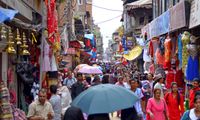
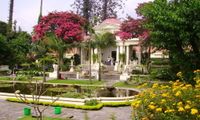
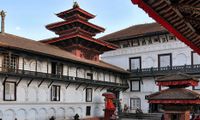
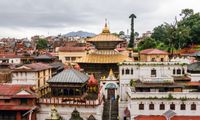
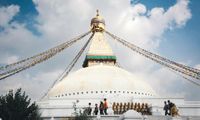

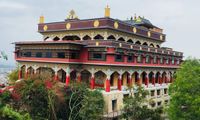
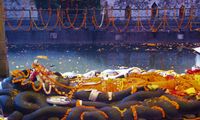


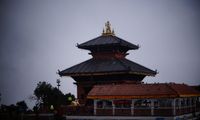
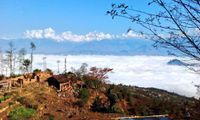

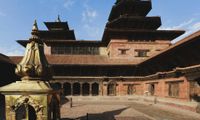
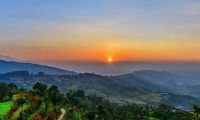
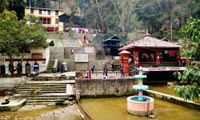
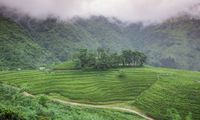
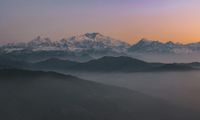
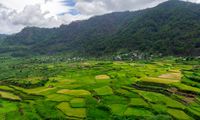
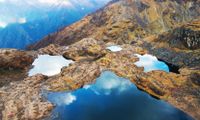
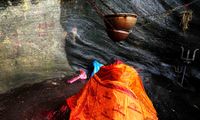
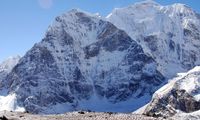
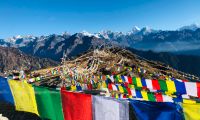

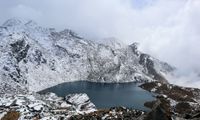
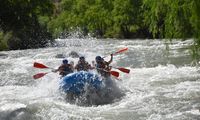

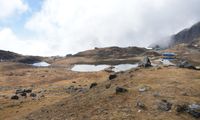

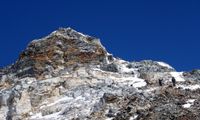
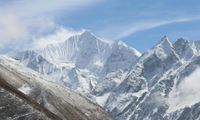


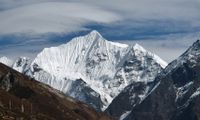

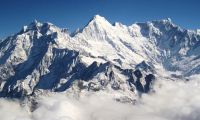

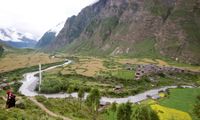

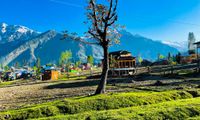

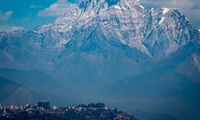
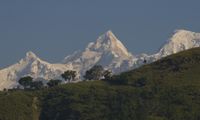
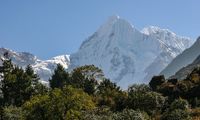
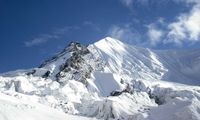
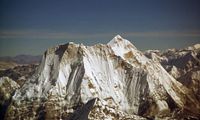
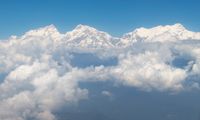
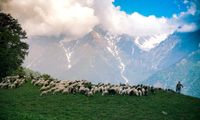

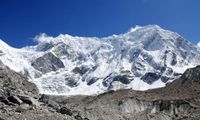
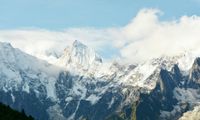
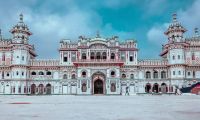


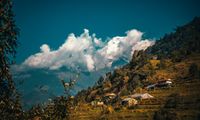

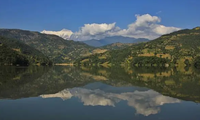
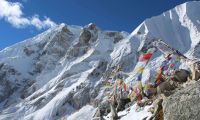
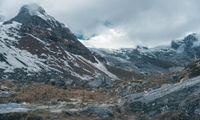
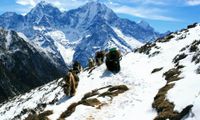
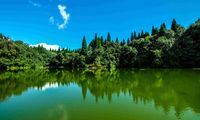



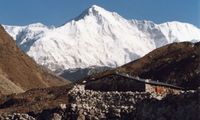
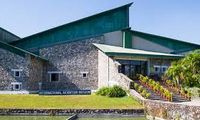
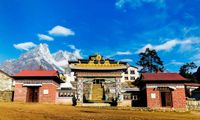
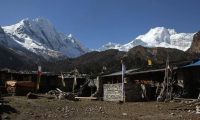
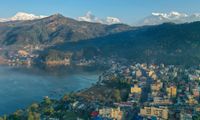
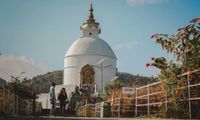
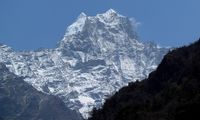
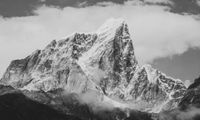
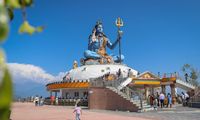
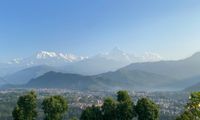
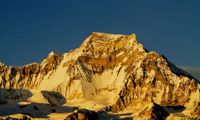
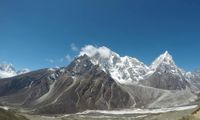
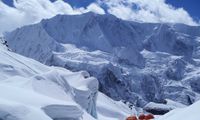
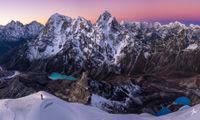
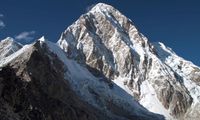
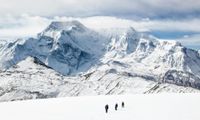

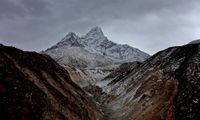

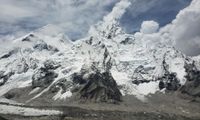
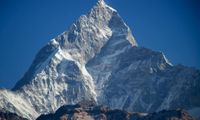
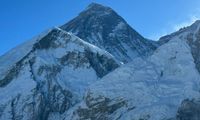
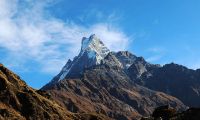
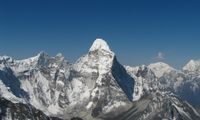
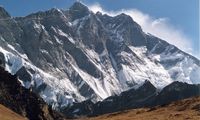
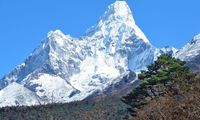

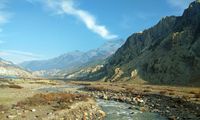
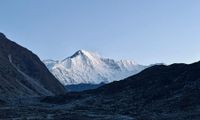

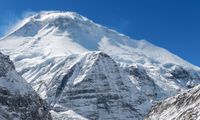
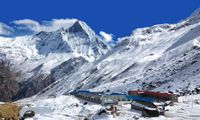
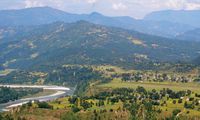
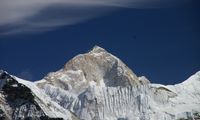
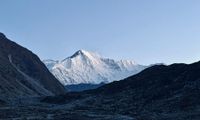
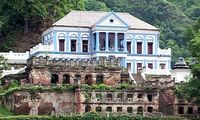

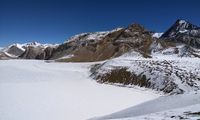
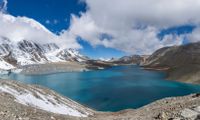
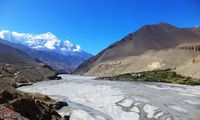
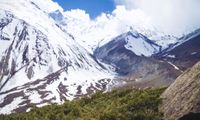

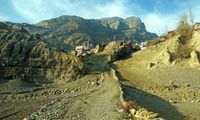
.jpg)


